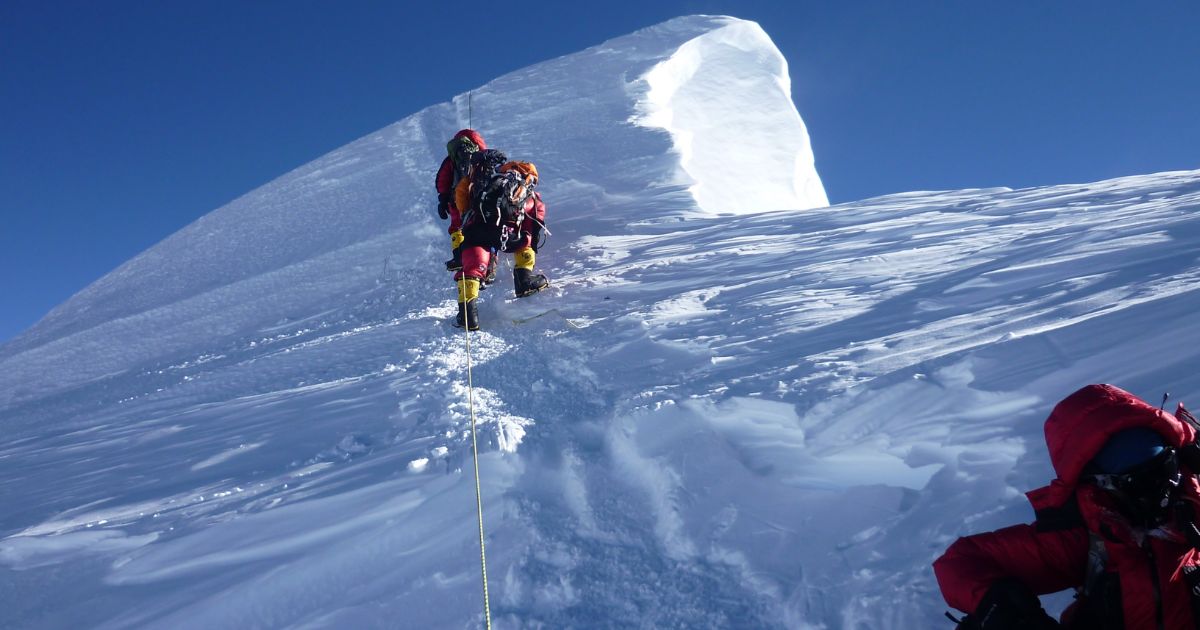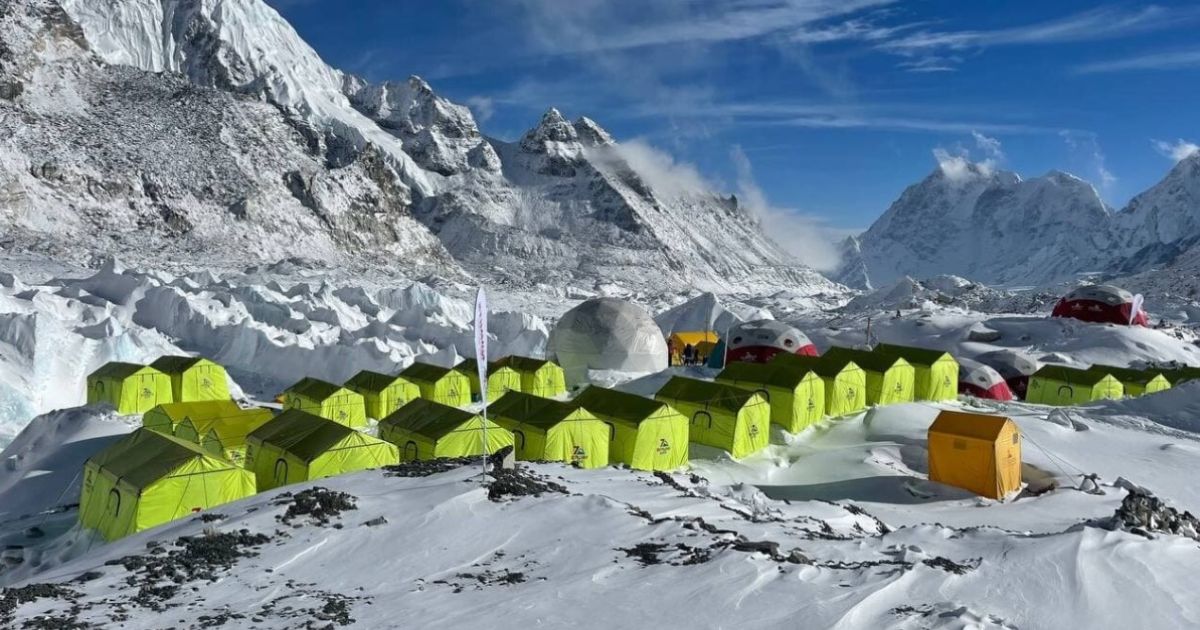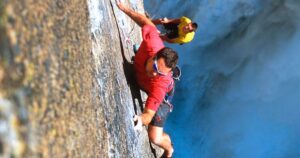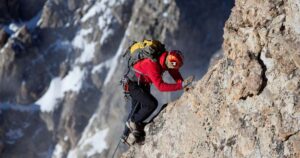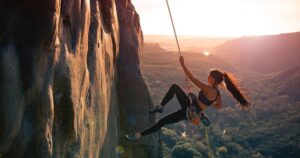Mount Everest, the highest peak in the world, has long captivated the hearts and minds of adventurers and mountaineers. For those who dream of standing atop this majestic summit, one question looms large: How long does it take to climb Everest? The answer, of course, is not a simple one. The journey to the top of Everest is a grueling and treacherous undertaking that requires careful planning, physical endurance, and mental fortitude.
Factors such as acclimatization, weather conditions, and individual fitness levels can greatly influence the time it takes to reach the summit. In this article, we will explore the various stages of the climb and delve into the average time it takes to conquer this formidable mountain. So, if you are seeking to join the exclusive club of Everest summiteers, read on to discover the challenges that lie ahead and the time it takes to conquer the roof of the world.
Key Takeaways
- The average duration of the climb is around two months, with several weeks spent on acclimatization to the high altitude.
- Careful planning and preparation are essential for a safe and successful climb.
- Acclimatization duration ranges from two to four weeks and plays a crucial role in reducing the risk of altitude sickness and increasing the chances of a successful summit.
- Climbers face various challenges and risks, including altitude-related illnesses, extreme weather conditions, and technical difficulties.
The Factors That Influence Climbing Time
There are several key factors that can significantly influence the time it takes to climb Mount Everest. One of the most important factors is the average duration of the climb. On average, it takes around two months to climb Mount Everest, with climbers spending several weeks acclimatizing to the high altitude before attempting the final summit push. The journey to the summit is physically demanding and mentally challenging, requiring climbers to navigate treacherous terrain and endure extreme weather conditions.
Which brings us to another crucial factor: the impact of weather. Everest is known for its unpredictable and harsh weather patterns, including high winds, freezing temperatures, and heavy snowfall. Inclement weather can delay or even force climbers to abandon their summit attempts, adding additional days or weeks to their overall climbing time. It is essential for climbers, especially those good at bouldering, to carefully plan their ascent, taking into account the average duration and the potential impact of weather conditions to ensure a safe and successful climb.
Average Time Spent Acclimatizing
Acclimatization duration is a crucial factor in climbing Mount Everest, as it directly impacts climbers’ chances of success and their overall safety. The average time spent acclimatizing varies depending on the individual and their physical condition, but it typically ranges from two to four weeks. Optimal acclimatization time allows the body to adjust to the high altitude and lower oxygen levels, reducing the risk of altitude sickness and increasing the chances of a successful summit.
Acclimatization Duration Impact
During the ascent of Mount Everest, the duration of acclimatization significantly impacts the average time spent preparing for the climb. The acclimatization process is crucial for climbers to adjust to the high altitude and prevent altitude sickness. The longer the acclimatization period, the better the chances of a successful summit. To illustrate the impact of acclimatization duration, let’s consider the following table:
| Acclimatization Duration | Average Time Spent Preparing |
|---|---|
| 7-10 days | 4-6 weeks |
| 14-21 days | 6-8 weeks |
| 28-35 days | 8-10 weeks |
| 42-49 days | 10-12 weeks |
As shown in the table, a longer acclimatization period allows climbers to gradually adapt to the thin air and minimize the risk of altitude sickness. This, in turn, requires a more extended time commitment for training and preparation. Ultimately, investing sufficient time in acclimatization is essential for a safe and successful climb of Mount Everest.
Optimal Acclimatization Time
The ideal duration for acclimatization, or the average time spent acclimatizing, plays a crucial role in determining the success of climbers attempting to summit Mount Everest. Proper acclimatization allows the body to gradually adjust to the effects of altitude, minimizing the risk of altitude sickness and increasing the chances of a successful ascent. The optimal acclimatization duration varies from person to person, but generally, climbers spend around 4-6 weeks acclimatizing before attempting the summit. During this time, climbers gradually climb to higher altitudes, allowing their bodies to adapt and produce more red blood cells to carry oxygen more efficiently.
- Factors affecting optimal acclimatization duration:
- Individual tolerance to altitude
- Climber’s previous experience at high altitudes
- Fitness level and overall health
- Effects of altitude on acclimatization:
- Decreased oxygen levels
- Lower air pressure
- Increased risk of altitude sickness
- Importance of a gradual ascent:
- Allows the body to adjust slowly
- Reduces the risk of altitude-related complications
- Increases chances of summiting successfully
Trekking From Base Camp to Camp 1
Trekking from Base Camp to Camp 1 involves traversing a rugged and challenging terrain. This section of the Everest climb is crucial for acclimatization, as climbers need to adapt to the high altitude before progressing further. The average acclimatization time spent in this phase is around 2-3 days. During this period, climbers face various trekking difficulties, such as steep ascents, icy paths, and unpredictable weather conditions.
The rugged terrain demands physical endurance and mental strength. Climbers must navigate through rocky trails, traverse crevasses, and overcome glaciers. The breathtaking views of the surrounding mountains and the Khumbu Icefall make the journey worthwhile. As climbers successfully complete this leg, they are ready to progress from Camp 1 to Camp 2, where new challenges and breathtaking landscapes await.
Progressing From Camp 1 to Camp 2
Progressing from Camp 1 to Camp 2 is a crucial stage in the journey to climb Mount Everest. It involves climbing through the treacherous Khumbu Icefall, which is filled with crevasses and constantly shifting ice formations. This section of the climb is particularly challenging due to the increased altitude and the need for climbers to navigate through the dangerous icefall, making it a critical test of their skills and endurance.
Climbing Time for Camps
Climbers typically spend several hours ascending from Camp 1 to Camp 2 on their journey to conquer Mount Everest. This portion of the climb requires careful planning and consideration of climbing speed and rest intervals. Here are some key factors that affect the climbing time for camps:
- Climbing speed: Climbers aim to maintain a steady pace to conserve energy and avoid altitude sickness. The average climbing speed from Camp 1 to Camp 2 is around 250 meters per hour.
- Rest intervals: Climbers take short breaks to rest and acclimatize to the increasing altitude. These intervals vary depending on individual fitness levels and acclimatization progress.
- Weather conditions: Unpredictable weather can significantly impact climbing time, as climbers may need to take shelter or postpone their ascent.
As climbers progress from Camp 1 to Camp 2, they face the challenges of higher altitudes, which we will discuss in the next section.
Challenges of Higher Altitudes
As climbers advance from Camp 1 to Camp 2, they encounter the formidable challenges posed by higher altitudes. These challenges become more pronounced as they leave the relative comfort of Camp 1 and venture into the harsher conditions of Camp 2. One of the main challenges is altitude sickness, also known as acute mountain sickness (AMS). At higher altitudes, the air becomes thinner, which means there is less oxygen available for the body.
This can lead to symptoms such as headaches, nausea, dizziness, and fatigue. Climbers must acclimatize slowly and carefully to allow their bodies to adjust to the lower oxygen levels. It is crucial to monitor and manage symptoms of altitude sickness to prevent more severe conditions, such as high altitude pulmonary edema (HAPE) or high altitude cerebral edema (HACE). The challenges of higher altitudes require climbers to be vigilant and prioritize their health and safety.
Ascending From Camp 2 to Camp 3
Ascending from Camp 2 to Camp 3 involves traversing challenging terrain and typically takes climbers several hours to complete. This section of the climb requires climbers to maintain a steady ascending speed while dealing with diminishing oxygen levels. Here are three key factors to consider during this phase:
- Oxygen supplementation: At this altitude, oxygen levels drop significantly, making it crucial for climbers to use supplemental oxygen to maintain their physical performance and prevent altitude sickness.
- Technical challenges: The route from Camp 2 to Camp 3 includes steep sections, narrow ridges, and icy slopes, requiring climbers to navigate carefully and use proper climbing techniques.
- Acclimatization: Climbers spend time at Camp 2 to acclimatize to the altitude before attempting the ascent to Camp 3. This helps their bodies adjust to the reduced oxygen levels and reduces the risk of altitude-related illnesses.
After successfully ascending from Camp 2 to Camp 3, climbers are now ready to tackle the next stage of their journey: climbing from Camp 3 to Camp 4, which presents its own set of unique challenges.
Climbing From Camp 3 to Camp 4
Traversing from Camp 3 to Camp 4 involves navigating treacherous terrain at high altitude. This phase of the Everest climb presents numerous climbing challenges and is considered one of the most demanding sections of the expedition. At this point, climbers are already battling the effects of altitude, including decreased oxygen levels and extreme cold temperatures.
The route from Camp 3 to Camp 4 is steep and exposed, with sections of icy slopes and rocky cliffs. Climbers must carefully choose their steps and rely on their technical skills to progress safely. The altitude effects become more pronounced as they ascend, with fatigue and difficulty breathing becoming constant companions. It is essential for climbers to acclimatize properly and monitor their physical condition closely to mitigate the risks associated with climbing at extreme altitudes.
Summit Push: Final Steps to the Top
To reach the summit of Everest, climbers must make their final ascent, navigating challenging terrain and battling the effects of extreme altitude. The summit push is the most critical part of the climb, requiring meticulous planning and execution. Here are three key aspects of the summit push:
- Summit Strategy: Climbers develop a strategy based on weather conditions, fitness levels, and available resources. They aim to reach the summit within a specific time frame, taking into account the limited oxygen supply and potential risks.
- Weather Conditions: Weather plays a crucial role in determining the success of the summit push. Climbers carefully monitor forecasts and make decisions accordingly. They avoid climbing during high winds or storms to minimize the risks associated with unpredictable weather.
- Mental and Physical Stamina: Reaching the summit requires immense mental and physical strength. Climbers must overcome fatigue, altitude sickness, and extreme cold. They rely on their training, experience, and support from Sherpas to push through the final steps to the top.
As climbers conquer the summit, the next challenge awaits – descending from the summit to base camp.
Descending From the Summit to Base Camp
After successfully reaching the summit of Everest, climbers face the challenging task of descending back to base camp. This descent is equally important and can be just as treacherous as the ascent. The descent from the summit to base camp is a critical phase of the Everest expedition and requires careful planning and execution.
One of the key factors to consider during the descent is the descending time. Climbers need to descend swiftly but safely to avoid spending too much time at high altitudes, where the effects of altitude can be severe. The longer one stays at high altitudes, the greater the risk of altitude sickness and other altitude-related issues.
To give you an idea of the descending time, here is a table showing the approximate descent times from different points on Everest:
| Descent Point | Descent Time (hours) |
|---|---|
| Summit to Camp 4 | 4-6 |
| Camp 4 to Camp 2 | 4-6 |
| Camp 2 to Base Camp | 4-6 |
It is important to note that these times can vary depending on the climber’s physical condition, weather conditions, and other factors. It is crucial for climbers to pace themselves and listen to their bodies during the descent to ensure a safe return to base camp.
Descending from the summit of Everest to base camp is a challenging endeavor that requires skill, endurance, and mental strength. Climbers must be cautious of the effects of altitude as they make their way down to lower elevations. By carefully managing their descending time and being aware of altitude-related issues, climbers can increase their chances of a successful descent and a safe return to base camp.
Frequently Asked Questions
What Equipment Is Needed for Climbing Everest?
Mountaineering gear and essential equipment are necessary for climbing Everest. This includes items such as crampons, ice axes, ropes, harnesses, helmets, and high-altitude clothing. Proper equipment is crucial for safety and success on the mountain.
What Is the Cost of Climbing Everest?
When considering the cost of climbing Everest, it is essential to engage in thorough cost estimation and financial planning. The expenses involved include permits, equipment, guides, travel, and accommodation, all of which require careful consideration and budgeting.
What Are the Risks and Dangers Associated With Climbing Everest?
When climbing Everest, there are numerous risks and dangers that climbers face, including avalanche risks and altitude sickness dangers. These hazards can be life-threatening and require careful planning, preparation, and experience to mitigate.
Are There Any Age Restrictions for Climbing Everest?
Age restrictions and health requirements are essential considerations for those aspiring to climb Everest. The mountain’s extreme conditions demand physical fitness and mental resilience. Moreover, climbers must meet certain age criteria to ensure their safety and overall success in conquering this challenging peak.
How Many Climbers Attempt to Climb Everest Each Year?
Each year, a significant number of climbers attempt to conquer Mount Everest, making it one of the world’s most popular climbing destinations. The climbing statistics and records reflect the allure and challenge of this iconic peak.
Conclusion
In conclusion, climbing Mount Everest is a daunting and challenging endeavor that requires careful planning and preparation. The time it takes to reach the summit can vary depending on several factors, including acclimatization, weather conditions, and individual fitness levels. While some experienced climbers may be able to complete the climb in a shorter amount of time, it is important to prioritize safety and take the necessary steps to ensure a successful and enjoyable journey. So, if you’re considering tackling Everest, be prepared for a long and arduous adventure that will test both your physical and mental strength.
